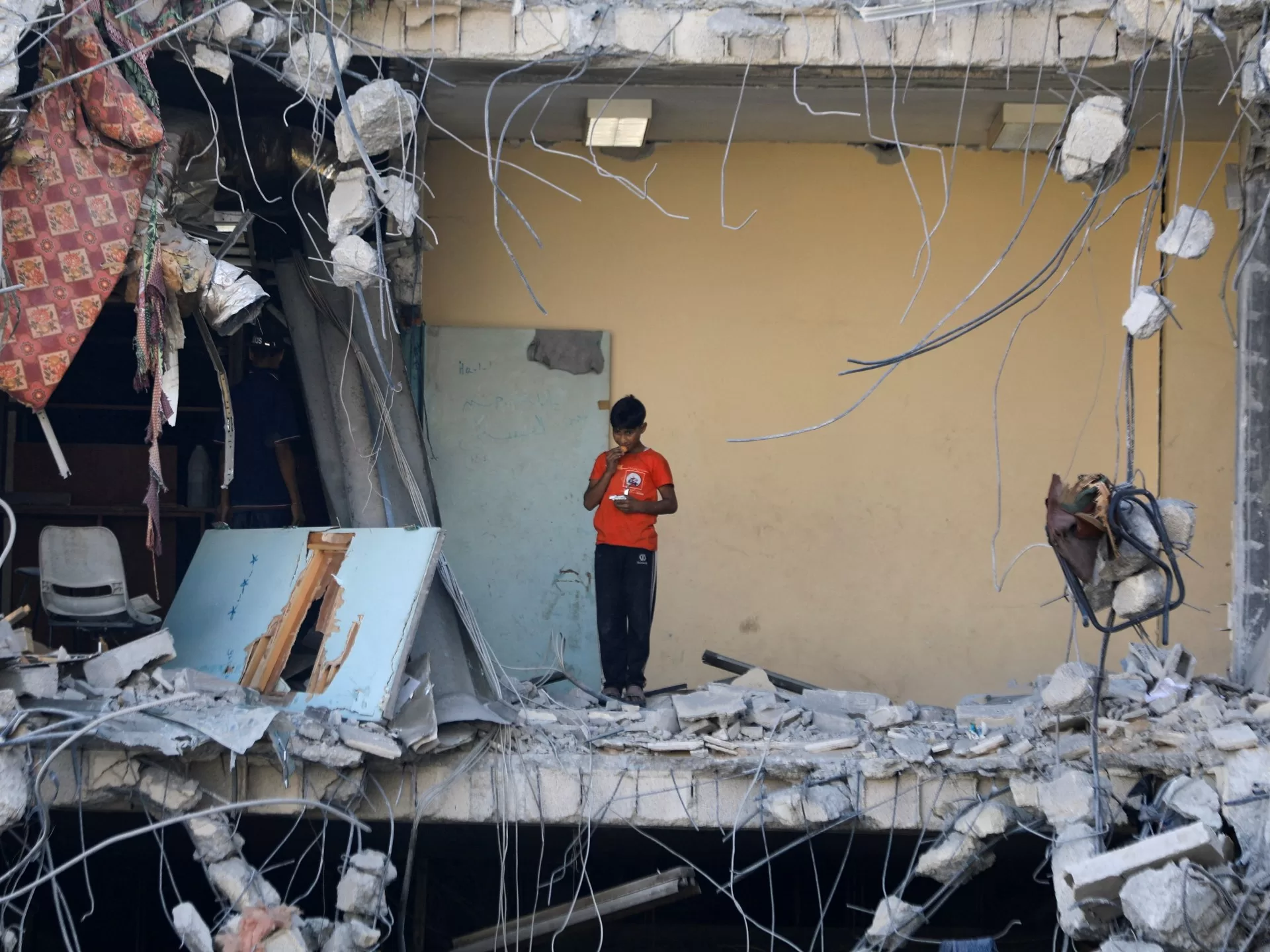The war debris contains unexploded ordnance, harmful substances and bodies, according to a UN report.
The United Nations Relief and Works Agency for Palestine Refugees (UNRWA) estimates that clearing the Gaza Strip of the rubble caused by Israel’s latest war on the Palestinian enclave will take 15 years.
The agency on Monday said the cleanup would require the removal of 40 million tonnes of rubble, citing an assessment by the UN Environment Programme (UNEP).
“Debris poses a deadly threat for people in the Gaza Strip as it can contain unexploded ordnance and harmful substances,” UNRWA said, adding that its removal would require more than 100 trucks and cost more than $500m.
It would take up to 15 years to clear around 40 million tons of war rubble in #Gaza says @UNEP. The effort would need 100+ trucks and cost over $500 million.
Debris poses a deadly threat for people in the #GazaStrip as it can contain unexploded ordnance and harmful substances. pic.twitter.com/KNyvXlZ0hC
— UNRWA (@UNRWA) July 15, 2024
The UNEP said some of the debris is contaminated with asbestos, a toxic mineral that causes lung diseases, including cancer. It added that human remains are buried in a vast quantity of building debris.
By comparison, during the 2014 Israel-Hamas war in Gaza, about 2.4 million tonnes of debris were removed.
The UNEP estimated that the amount of debris in the Gaza Strip is “13 times more than the combined sum of all debris generated by other conflicts in Gaza since 2008”.
More than nine months into Israel’s war on Gaza, vast tracts of the enclave lie in ruins amid a crippling blockade of food, clean water and medicine.
Last month, Israel’s Army Radio, quoting military officials, said about 50,000 bombs had been dropped on Gaza by Israeli warplanes since October 7, adding that 2,000 to 3,000 bombs did not explode.
In May, the UN Development Programme (UNDP) estimated that rebuilding Gaza’s homes could take until 2040.
“The overall reconstruction of Gaza today, according to our estimate, will be between $40bn and $50bn at least,” Abdallah al-Dardari, director of the Regional Bureau for Arab States at the UNDP, said at the time.
“We have not seen anything like this since 1945,” al-Dardari said.
Overall, the level of destruction is such that the UNDP estimated the human development index in Gaza has regressed by 40 years.
The index assesses factors including years of gains in schooling, education attainment, health and life expectancy at birth.
“All investments in human development … for the last 40 years in Gaza have been wiped out,” al-Dardari said. “We are almost back in the ’80s.”
